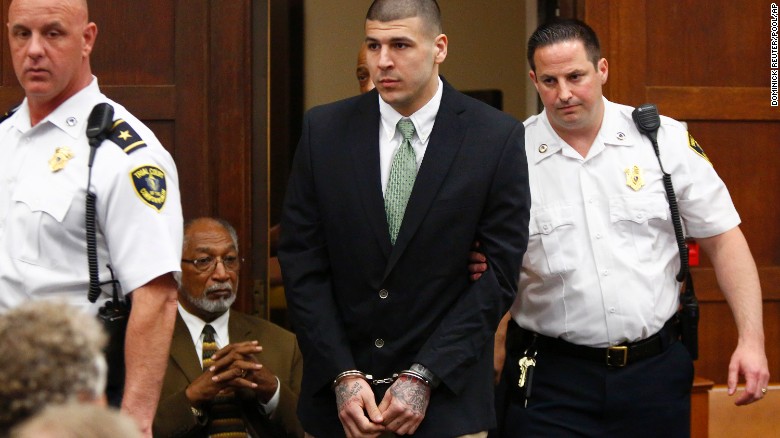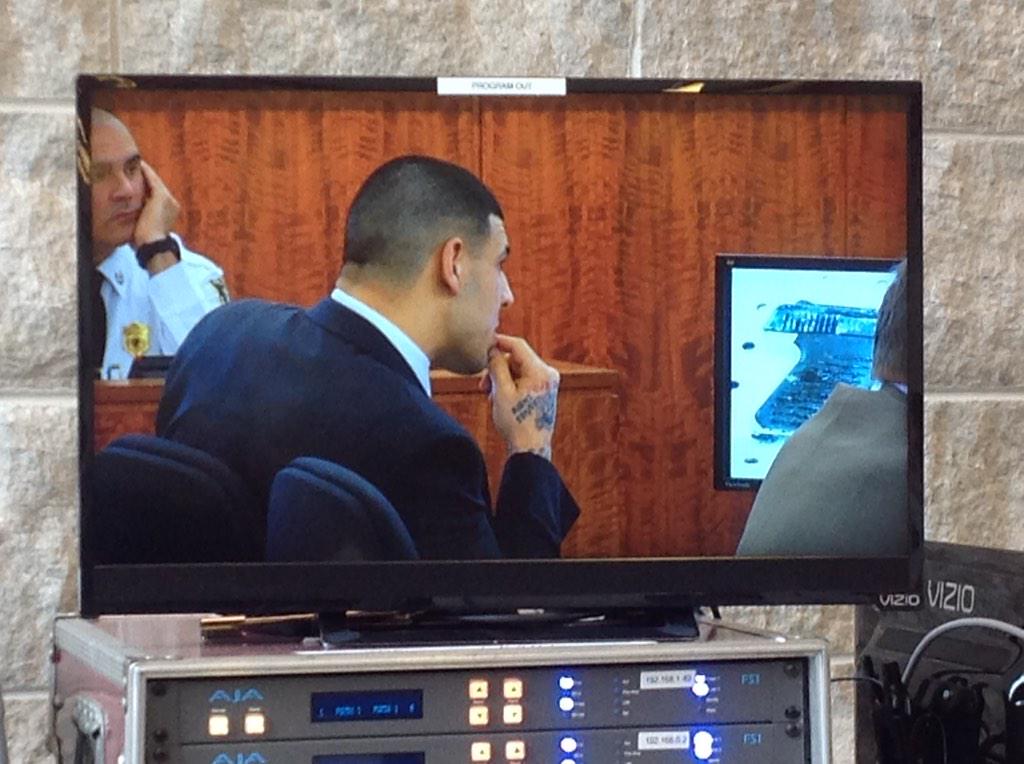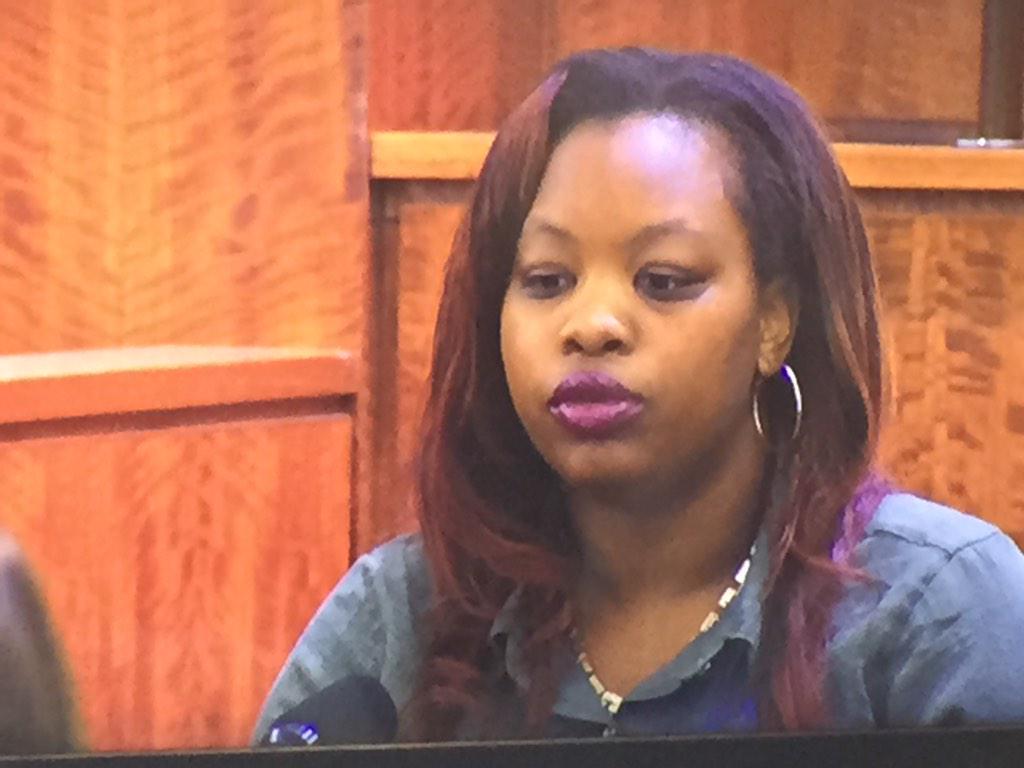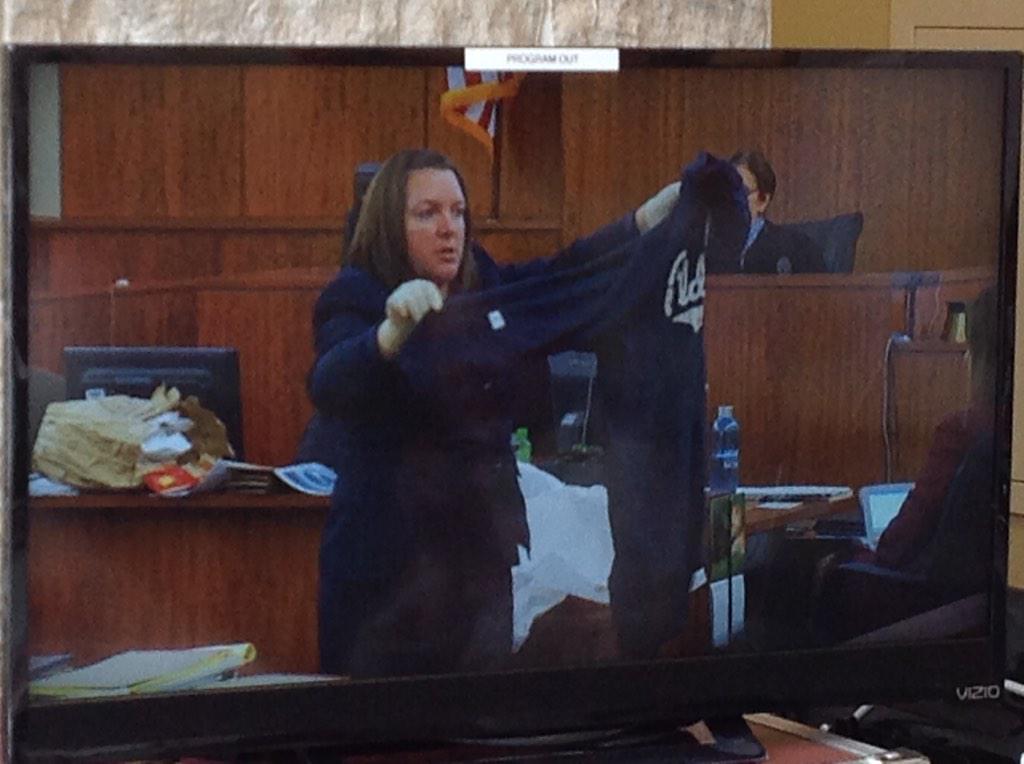Aaron Hernandez's murder trial.
Aaron Hernandez's murder trial - Background and Key Moments.
Aaron Michael Hernandez is a former American football player who is currently being held without bail following his indictment on three murder charges. On August 22, 2013, Hernandez was indicted by a grand jury for the murder of Odin Lloyd, a semi-pro football player, in July 2013. On May 15, 2014, Hernandez was indicted for the 2012 double homicide of Daniel de Abreu and Safiro Furtado.

Background
2013 Miami shooting lawsuit On June 13, 2013, Alexander S. Bradley, described as a friend of Hernandez, filed a lawsuit against Hernandez in a Florida federal court. Bradley claimed that on February 13, 2013, Hernandez had shot him while the two were riding in a car on Interstate 95 in Palm Beach County, following an altercation at a Miami strip club; Bradley alleged that he lost his right eye as a result. When police came to assist Bradley, he declined to name his assailant, and no arrest was made at the time. Bradley's lawsuit was dismissed on June 17, 2013, as a result of incorrect paperwork, and refiled on June 19, 2013.
On September 3, 2013, Hernandez's lawyers filed a postponement request in federal court until his murder charges are resolved. They say it would be legally unfair to Hernandez to permit the lawsuit to continue while he is defending himself in the shooting death of 27-year-old Odin Lloyd.
Alleged connections to the 2013 murder of Odin Lloyd On June 18, 2013, Hernandez's house in North Attleboro was searched by police for several hours in connection with an investigation into the shooting death of a friend, Odin Lloyd. Lloyd's body was found in an industrial park about a mile away from Hernandez's house with multiple gunshot wounds to the back and chest. The Massachusetts State Police obtained a search warrant after evidence surfaced that Hernandez intentionally destroyed his home security system. A cell phone belonging to Hernandez was turned over to police "in pieces" and Hernandez allegedly hired a "team of house cleaners" the same day Lloyd's body was discovered, raising additional suspicion.
On June 20, 2013, the Boston Herald reported that Hernandez had been "barred" from Gillette Stadium by the Patriots. According to NFL.com, Patriots owner Robert Kraft decided to have Patriots staff ask Hernandez to leave because he did not want Gillette to be "the site of a media stakeout". However, the Boston Globe reported that the Patriots front office had decided days before Hernandez's arrest that if Hernandez were arrested on any charge related to the case, even an obstruction of justice charge, he would be released.
On June 26, 2013, Hernandez was taken from his home in handcuffs and into police custody. The Patriots released Hernandez about 90 minutes later, before officially knowing the charges against him. Their press release stated:
A young man was murdered last week and we extend our sympathies to the family and friends who mourn his loss. Words cannot express the disappointment we feel knowing that one of our players was arrested as a result of this investigation. We realize that law enforcement investigations into this matter are ongoing. We support their efforts and respect the process. At this time, we believe this transaction is simply the right thing to do.
Later that day, Hernandez was charged with first-degree murder, in addition to five gun-related charges; if convicted of first-degree murder, Hernandez faces life in prison without the possibility of parole; Hernandez cannot face the death penalty, as the state of Massachusetts abolished the death penalty in 1984. He is currently being held without bail at the Bristol County Jail.
Two other men were also arrested in connection with Lloyd's death: Carlos Ortiz, on June 27, 2013, and Ernest Wallace on June 28, 2013. Ortiz revealed to the police that Hernandez had secretly rented an apartment in Franklin, Massachusetts. A subsequent search of the apartment, according to the Associated Press, "turned up ammunition and clothing that police believe could be evidence in the murder case against him".
On August 22, 2013, Aaron Hernandez was indicted by a grand jury for the murder of Odin Lloyd.
On September 6, 2013, Hernandez was arraigned and pled not guilty to first-degree murder. He will be held without bail, but reserved the right to request bail later.
2012 Boston double homicide On June 27, 2013, law enforcement sources told the media that Hernandez was being investigated in connection with a double murder that took place on July 16, 2012, in Boston's South End when Daniel Jorge Correia de Abreu, 29, and Safiro Teixeira Furtado, 28, both of Dorchester, were killed by gunshots fired into their vehicle. On May 15, 2014, Hernandez was indicted on murder charges for the killings of Abreu and Furtado, with additional charges of armed assault and attempted murder associated with shots fired at other surviving occupants in the vehicle.
Aftermath impacts of the charges for Hernandez Hernandez's arrest and subsequent termination led to financial and other consequences for both Hernandez and the New England Patriots.
Hernandez's release meant he automatically forfeited his 2015-18 salaries, totaling $19.3 million, which were not guaranteed. The Boston Globe reported that the Patriots voided all remaining guarantees, including his 2013 and 2014 salaries, on the grounds that those guarantees were for skill, injury, or salary cap room, and did not include being cut for "conduct detrimental to the best interests of professional football". Furthermore, the Patriots will attempt to withhold $3.25 million of Hernandez's 2012 signing bonus that was due to be paid in 2014, and to recoup the signing bonus they have already paid.
Since Hernandez had not completed his fourth season in the league, he was subject to waivers, but went unclaimed. After Hernandez cleared waivers, NFL commissioner Roger Goodell announced that, while charges against Hernandez are pending, the NFL will not approve any contract signed by Hernandez until Goodell holds a hearing to determine if Hernandez should face suspension "or other action".
CytoSport and Puma canceled their endorsement deals with Hernandez; Puma canceled its deal after Hernandez's arrest, while CytoSport canceled its deal a few days prior.
EA Sports announced that Hernandez's likeness would be dropped from its NCAA Football 14 and Madden NFL 25 video games.
A prize-winning photo of Hernandez from his rookie season at the Pro Football Hall of Fame in Canton, Ohio, was removed after visitor complaints.
Panini America, a sports memorabilia and trading card company, removed stickers of Hernandez from approximately 500,000 sticker books which had yet to be sent to collectors and replaced the stickers, as well as trading cards, with cards depicting Tim Tebow.
The University of Florida has removed Hernandez's name and likeness from various locations at its football facilities.
Latest Key Moments From The Trial
Five full weeks into Aaron Hernandez's murder trial, prosecutors have called 77 witnesses. Jurors have yet to hear from the former NFL star's fiancée, Shayanna Jenkins, New England Patriots head coach Bill Belichick or owner Robert Kraft.
But emotional testimony and important developments have happened in the case against Hernandez, who has pleaded not guilty to killing Odin Lloyd in 2013.
DNA linked to Hernandez and Lloyd
A DNA analyst from the Massachusetts State Police crime lab said she found that Hernandez's DNA matched the DNA taken from a marijuana joint found near Lloyd's body at the crime scene. Lloyd's DNA also was found on the blunt.
The DNA analyst, Diane Biagiotti, testified to finding a partial DNA match from Hernandez on the shell casing found in the dumpster of the Enterprise rental car office. But under cross-examination, lead defense attorney Jamie Sultan got Biagiotti to acknowledge there's a high likelihood that DNA from chewing gum could have transferred to the shell casing found in the dumpster.
The office manager at the rental car office, Keelia Smyth, testified that she put the shell casing and the gum together after finding the items in the Nissan Altima returned by Hernandez on June 17, 2013. She said she threw them in the trash bin outside of her office.
Inside Hernandez's downward spiral
It was revealed by Sultan that the state never submitted the gum for DNA testing. The state has not yet explained why. We may hear the answer during the state's redirect of Biagiotti on Monday. Hernandez is seen on surveillance video buying gum, and he also offered some to Smyth.
Biagiotti said under cross-examination that it's highly unlikely to find DNA on any shell casing. One reason is because the heat from the gun wipes away any DNA, she said. The shell casings found at the crime scene did not have enough DNA on them to produce a DNA profile.
Hernandez's family was in court on Friday after a week's absence. Hernandez's mother, Terri Hernandez, told CNN' that she thought Friday "went very well" for him.
Fingerprints and tire treads
Testimony has focused on fingerprints from Hernandez and Lloyd that were found inside the rented Nissan Altima.
The car also had fingerprints of Ernest Wallace and Carlos Ortiz, who are also charged with killing Lloyd. They have pleaded not guilty and will be tried separately.

State Trooper David Mackin, a fingerprint expert with the Massachusetts State Police crime scene services, reported finding the fingerprints of Wallace and Ortiz in a Chrysler 300 that Hernandez rented. Prosecutors call it the "getaway car," which was ultimately found abandoned in Bristol, Connecticut.
But no prints were found on the .22-caliber gun recovered on the edge of a wooded area near Hernandez's home. Hernandez is charged with illegal possession of that gun.
In addition, no prints were found on any of the shell casings, including the casing found stuck to the blue bubblegum in the dumpster outside the Enterprise office.
Another key find was tire treads of the rear passenger tire of the Altima matched a tire impression found at the crime scene, according to court testimony.
Lloyd's sister testified about texts she received from him
Shaquilla Thibou, Lloyd's younger sister and the last family member to see him before he was killed, took the stand.

About an hour before his death, she said she watched him get into a silver Nissan Altima as she sat in a friend's car outside her home.
Thibou, who was 19 at the time of her brother's killing, told jurors that when Lloyd first walked to the car, he opened the front passenger door. He stopped and then opened the back passenger door and entered the car.
"The light came on and there was a shadow in the back seat," she said.
Then she saw the Altima pull away. It was 2:32 a.m.
Thirty minutes later, Thibou returned to her home and charged her dead phone. She noticed a text from her big brother.
Thibou was not allowed to share with jurors what was said in those texts. The judge ruled there is not enough proof the text message meant Lloyd feared for his life, legally called "a dying declaration."
That means that the jury did not hear that at 3:07 a.m., Lloyd texted his sister asking, "U saw who I'm with?"
At 3:11 a.m he checked in again, texting "hello."
Finally, at 3:19 a.m. Thibou answered, "my phone was dead who was that?"
At 3:22 a.m., Lloyd responded, "Nfl." A minute later, he sent his last text, "just so u know."
During grand jury testimony, Thibou admitted she thought her brother was bragging.
When reliving the moment when police came to her home to tell her family that Lloyd had been shot to death, Thibou began to cry silently, wiping her tears after Assistant District Attorney William McCauley gave her a tissue.
During cross-examination, defense attorney Michael Fee introduced a photo of Lloyd taken by Thibou. It showed Lloyd smiling and sitting in the driver's seat of the black Suburban that Hernandez loaned him.
Lloyd's bullet-riddled clothes were shown to jurors
On Wednesday, jurors got an up-close view of the clothes Lloyd was wearing the night he was shot six times.

Massachusetts crime lab forensic chemist Sherri Menendez held up Lloyd's bullet-riddled dark blue Old Navy sweatshirt and then his red plaid shirt. Jurors craned their necks to get a better view of the bullet holes in the sweatshirt. The shirt was stained with blood.
Menendez tested the bullet holes for gunshot residue consisting of what she described as burned particles and vaporous lead. During her testing of bullet holes on the front of the sweatshirt, she found both and was able to determine that Lloyd was shot from as close as 3 feet.
The autopsy showed the final two shots were fired into his chest while he was laying face up in the ground.
Details of Hernandez 'flophouse' come out
Just weeks before Hernandez was arrested and charged with murder, he toured rental apartments with New England Patriot employee Kevin Anderson, real estate agent Barbara Scardino testified Thursday.
She said she was initially contacted by Anderson to find some apartments to show Hernandez. He had previously called her to help other Patriot players find homes and apartment rentals, sometimes second residences near Gillette Stadium. This means the Patriot staff knew about Hernandez's second home.
In early May of 2013, she showed Anderson and Hernandez four apartments. Hernandez settled on the two-bedroom condo in Franklin, Massachusetts, referred to as his "flophouse."
Hernandez's home in North Attleboro and his condo in Franklin are each about 15 minutes away from the stadium.
Hernandez's Franklin neighbor, Carol Bailey, also took the stand, telling jurors that she met another man that also stayed in the condo. It was Hernandez's friend Wallace.
Bailey paid close attention to Hernandez and Wallace, seeing them come and go during their short stay there. During her one attempt to talk to Hernandez and say hello, she says he sort of grunted back, calling it a "nondescript" noise. She also testified that she often heard loud voices that sounded "locker room-ish" coming from the apartment as well as a strong "skunk-like" smell seeping into her apartment from their shared wall.
After mid-June, she never saw him again.
Cell phone tower tracking system explained
A representative from Sprint, Justin Darrow, started off the week with a light moment. He appeared nervous and stopped to take a moment while answering a question. He then turned to Judge Susan Garsh and apologized.
"It's a big case. Sorry."
Showing no emotion, Garsh struck the comment from the record.
Darrow went on to testify to multiple calls between Sprint cell phone client Ernest Wallace and Odin Lloyd, Aaron Hernandez and Hernandez's fiancee, Shayanna Jenkins, the night before and morning of Lloyd's death. Prosecutors say they believe Hernandez was using his fiancee's phone to call Wallace.
Darrow also explained how cell sites (or towers) in the Sprint network tracked the phone calls, and thus tracked the direction they were driving.
Another cell phone representative also testified. T-Mobile engineer Patrick Quinn testified about the data transmissions from Lloyd's cell phone beginning on June 17, 2013, at 2:32 a.m. That's when Lloyd was picked up outside his home in the Nissan Altima. Data transmissions are the automatic updates that are sent to cell phones.
Assistant District Attorney Patrick Bomberg methodically walked Quinn through data transmissions received on Lloyd's cell phone via multiple cell towers along the route he traveled from Dorchester to the industrial park in North Attleboro. The last cell tower was just 400 yards from Lloyd's body.
The case continues.
Source: